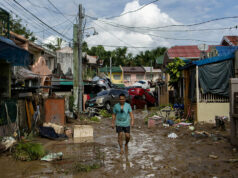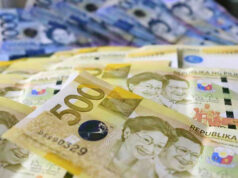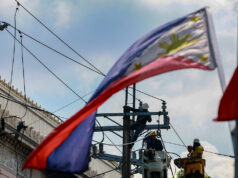June dollar reserves rise to record
By Luz Wendy T. Noble, Reporter
THE country’s dollar reserves rose to a record last month, supporting the peso amid market volatilities and protecting the economy from shocks brought by a global coronavirus pandemic.
Gross international reserves (GIR) rose by a tenth from a year earlier to $93.32 billion at the end of June, according to preliminary data from the Philippine central bank released on Wednesday. The dollar reserves increased by $30.5 million from the May level.
Ample reserves cushion financial markets from volatility and assure foreign investors and debt watchers that the government can pay its debt despite a worsening fiscal outlook and the economy’s first contraction in the first quarter after more than two decades of growth.
“The month-on-month increase in the GIR level reflected inflows mainly from the National Government’s foreign currency deposits with the Bangko Sentral ng Pilipinas (BSP),” the central bank said in a statement.
But these inflows were offset by foreign currency withdrawals made by the government to pay its foreign currency debt, it added.
The June buffer was higher than BSP’s $90-billion projection by yearend. Central bank Governor Benjamin E. Diokno has said the reserves could reach an all-time high of $95 billion this year.
The end-June reserve level was equivalent to 8.4 months’ worth of imports of goods and payments of services and primary income. It was also 7.3 times the country’s short-term external debt based on original maturity and 4.8 times based on residual maturity.
“This is more than twice the acceptable minimum international standard of three to four months of imports,” Michael L. Ricafort, chief economist at Rizal Commercial Banking Corp., said in an e-mail.
The higher reserves reflected increased borrowings in recent months by the government and private sector, “apart from gains in foreign investments by the Philippine government and residents,” he added.
Gross borrowings hit P290 billion in May, 58.8% of which were local and 41.2% were from overseas, according to data from the Treasury bureau. Gross borrowings from foreign creditors jumped by 59.72% to P199.307 billion.
Robert Dan J. Roces, chief economist at Security Bank Corp., said the ample reserves would boost the peso amid uncertainties.
“Yet again, record-high reserves continue to provide a good buffer for the peso to ensure structural support from external shocks,” he said in a mobile-phone message.
The peso closed at P49.48 on Wednesday, 6.5 centavos stronger than Tuesday’s close. The currency has been trading at the P49-50 level in recent months amid uncertainties caused by the coronavirus outbreak.
Gold reserves of the central bank, which are part of the foreign exchange buffer, have remained at their $8.02-billion level since June last year.
Gains from investments abroad, which make up the bulk of the dollar reserves, reached $80.805 billion at the end of June, 11.39% higher than a year earlier.
The country’s reserve position in the International Monetary Fund (IMF) stood at $730.7 million, 39.5% higher than a year earlier and 7.8% more than the month earlier..
On the other hand, foreign currency deposits fell by 2.73% to $2.592 billion from a year earlier. These were also 5.54% lower than the previous month’s level.
The continued increase in dollar reserves bodes well for the country amid a weakness in some key economic indicators, Mr. Roces said.
“We expect reserves to continue with its record buildup stepwise with payment financing needs such as imports and debt service, especially with the current economic climate where there could be very little export earnings and remittances,” he said.
The Philippines, which had been one of Asia’s fastest-growing economies before the pandemic, is on the edge of a recession after economic growth shrank by 0.2% in the three months through March.
Economists expect the contraction to have worsened last quarter as an extended lockdown in Manila, the capital and nearby cities took a heavier toll on local consumption.
President Rodrigo R. Duterte locked down the main island of Luzon in mid-March, suspending work, classes and public transportation to contain the pandemic. People should stay home except to buy food and other basic goods, he said.
He extended the lockdown — one of the strictest and longest in the world — for the island twice and thrice for the capital region. The lockdown in Metro Manila has since been eased, with more businesses allowed to reopen with a skeletal workforce. Mass gatherings remained banned.



